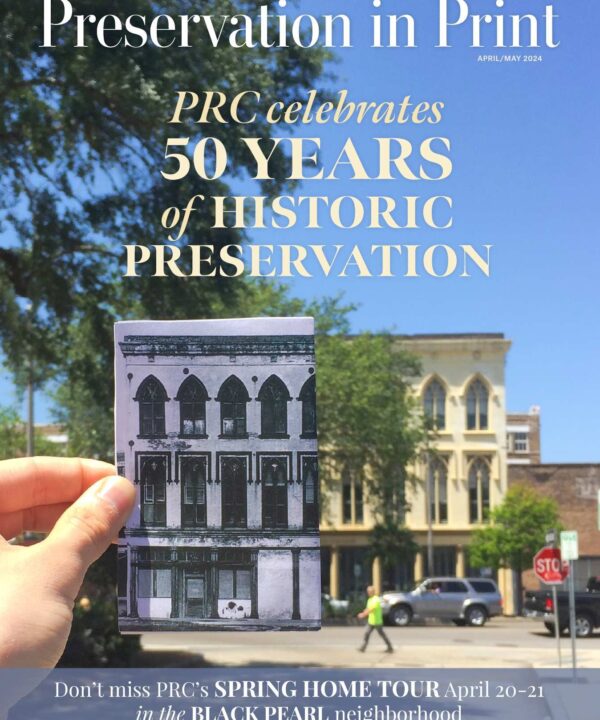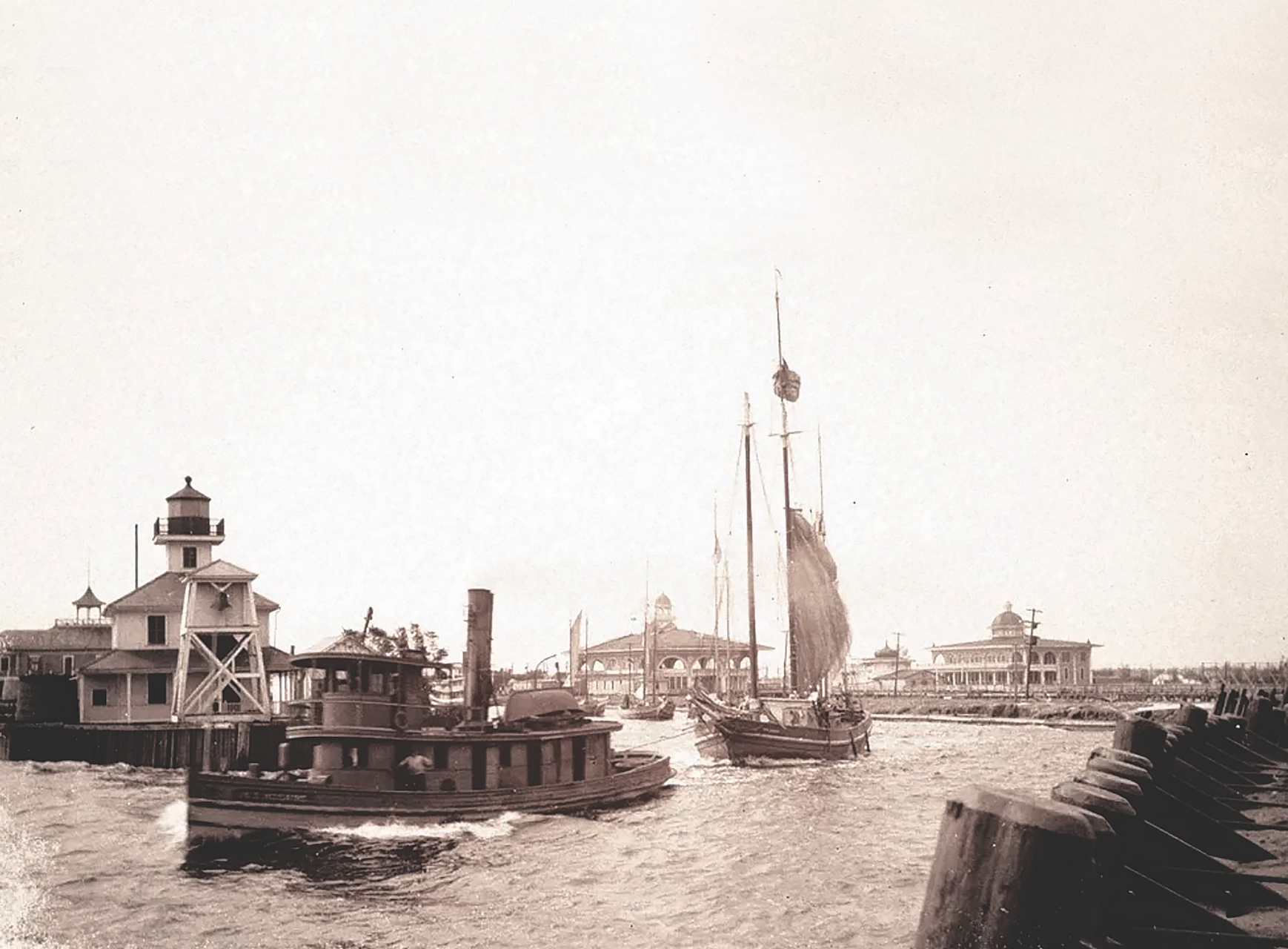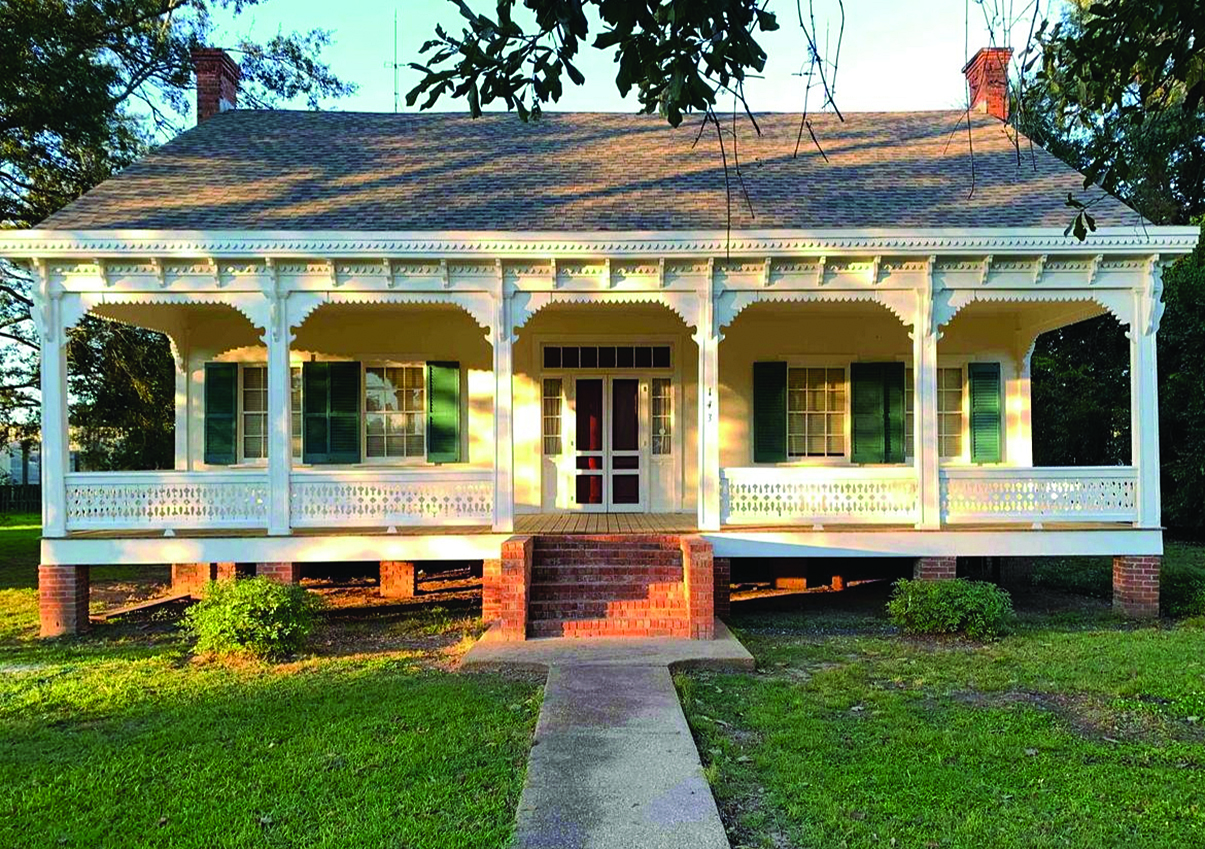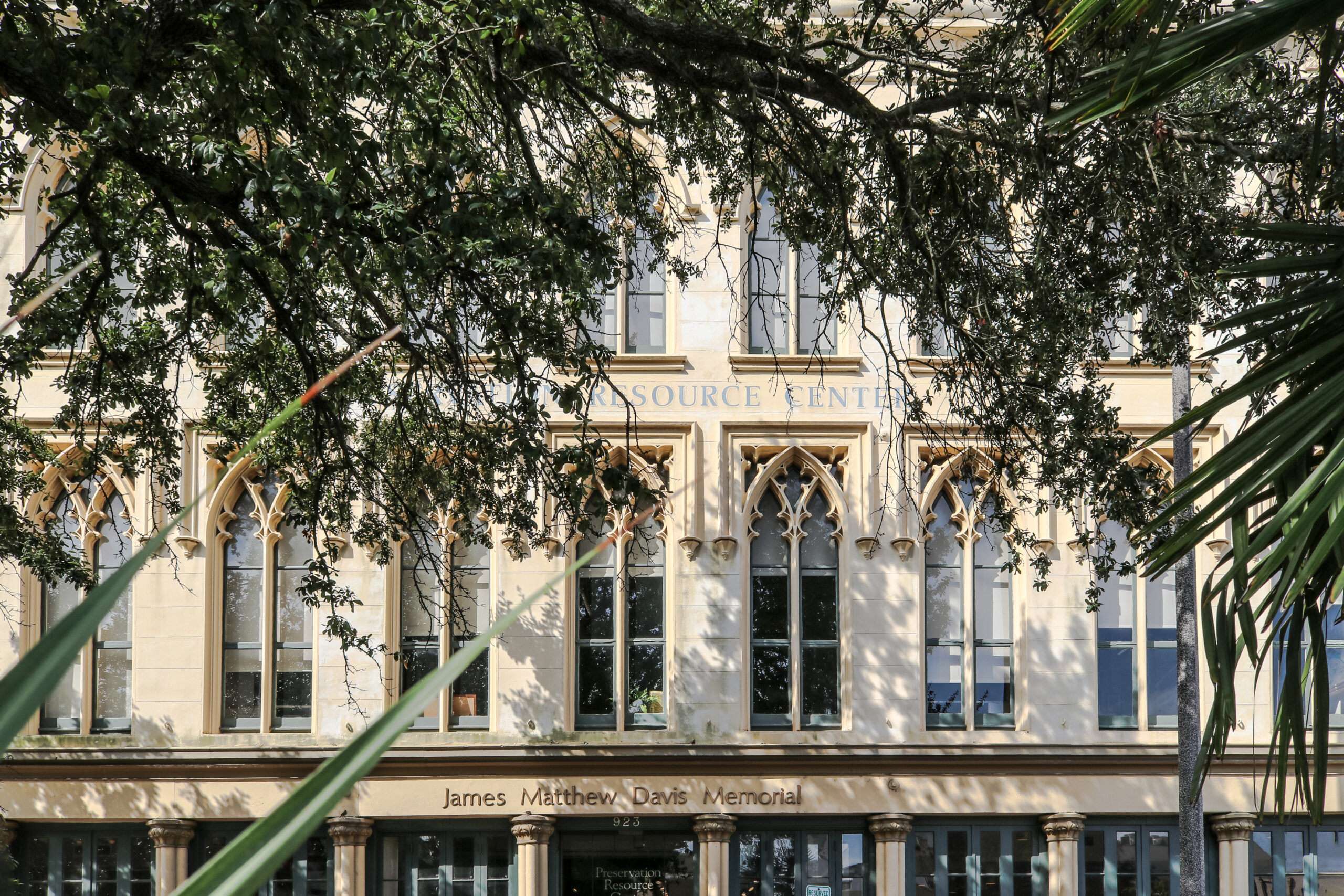This story appeared in PRC’s Preservation in Print magazine. Interested in getting more preservation stories like this delivered to your door? Become a member of the PRC for a subscription!
The Louisiana Landmarks Society’s annual awards for the best historic restoration, renovation and new design projects around New Orleans provide a window into the dynamic work happening around the city and proof again that historic preservation fuels economic development. The winners of the Society’s 2024 Awards for Excellence in Historic Preservation include an incredible array of residential, commercial and institutional building projects.
These awards honor projects completed in Orleans Parish in 2023, representing outstanding examples of restoration and rehabilitation of historic buildings.
“The diversity among the award-winning projects showcases the very best of historic preservation across New Orleans’ many notable neighborhoods and communities. This year’s honorees embody the vibrant tapestry of our city’s architectural legacy,” said René Fransen, president of the Louisiana Landmarks Society. “These projects play a pivotal role in enhancing our city’s cultural and economic vitality.”
The Preservation Resource Center congratulates the winners of the 2024 Awards for Excellence in Historic Preservation.
The following project descriptions were written by the Louisiana Landmarks Society.

Convent Lofts, 1022 Barracks St.
Team: Roderick A. Fifield, Architect LLC, Batture LLC; Sam Solomon; Bancroft Property Investments, LLC
The property along N. Rampart, Barracks, and Burgundy streets, initially developed for the Carmelite nuns, featured a complex within a 20-foot-tall brick wall built to accommodate their cloistered life. Established in 1877, expansions included the mansion (1845) and a Neo-Gothic chapel (1891). Acquired privately in 2016, it underwent a renovation starting in 2019, preserving historic features while converting into 25 residential units. The chapel, now a residential unit, retains its original elements. Zoning regulations preserved property integrity, focusing on residential use. Completed in 2023, the project met Vieux Carré Commission and National Park Service standards, safeguarding New Orleans’ architectural heritage in the process.

3116-18 Marais St.
Team: Ryan Nugent Architect; Historic Pro Nola;
Marley Investments
The project restored a traditional circa-1910 wood-frame double-shotgun home in the Bywater National Register District. Aimed at authentic restoration, it involved removing non-historic siding, revealing original drop-lap siding and quoins. Historic window casings prompted installation of accurate two-over-two, divided-light, double-hung wood windows. Original features like baseboards, fireplaces, and pocket-door casings were preserved. The layout returned to a traditional double-shotgun style. The project completes a suite of adjacent doubles on a single block, meeting federal and state historic tax credit program standards.

4201 Tulane Ave. (former Riecke Cabinet Works)
Team: KCT Tulane; Rome Office; Trine Builders; Urban Properties | SVN Project Management; Fricker Historic Preservation Services; Batture LLC; Moses Engineers; LO Specs; Charles E. Leche Photography
Concealed under a metal-building slipcover for 50 years, the Tulane Avenue Warehouse at 4201 Tulane Ave. has undergone meticulous restoration. It was built in 1924 as the workshop of Riecke Cabinet Works, renowned for crafting fine millwork for local clients, including church pews and judge enclosures. The building changed hands in 1971 and was shuttered in 2005, just before Hurricane Katrina. Recent maintenance revealed its intact historic skin, prompting a comprehensive restoration. Exterior work involved removing 1970s metal panels, repairing 1920s stone-face pressed metal panels, and integrating modern insulation.
Interior renovations created a bright, open space reminiscent of the original workshop for future use.

Dew Drop Inn, 2836 Lasalle St.
Team: Dew Drop Revival LLC; Ryan Gootee General Contractors; Studio Kiro; PACE Group; HG Engineering; Creative Engineering Group; BAi, LLC; Patch LA; Batture LLC; Leaaf Environmental LLC; Civic Studio; RYAN; Site 504; Associated Food Equipment & Supplies; M.R. Montero Electronics; Bilbo Information Technology Solutions
The Dew Drop Inn, at 2836 Lasalle St. in Central City, began as a barbershop in 1939. By 1945, it expanded into a music venue, hotel, and restaurant, hosting renowned Black musicians during segregation. Decline started in 1970 with the music venue’s closure, worsened by the 2005 hurricane, leaving it abandoned. It was listed by Louisiana Landmarks Society on its 2010 New Orleans Nine Most Endangered list and placed on the National Register of Historic Places in 2022. Despite structural issues and financing hurdles, renovations aimed to restore its original purpose. Today, the Dew Drop Inn celebrates its history while revitalizing New Orleans’ cultural and music scene.

Dodwell House, 1519 Esplanade Ave.
Team: St. Anna’s Episcopal Church; Mathes Brierre Architects; Southkick Historic Preservation; Mayer Building Company
The Dodwell House, a community center at 1519 Esplanade Ave., was revitalized by St. Anna’s Episcopal Church with a $4 million investment. Originally constructed in 1846 by Louisa Marsoudet, the building, at a prime location in Tremé, underwent various changes and was left abandoned for years, landing it on Louisiana Landmarks Society’s 2015 list of New Orleans’ Nine Most Endangered. Seeking expansion for after-school programs, St. Anna’s found synergy with the building’s history. Despite challenges like budget overruns and damage from Hurricane Ida, Dodwell House emerged as a symbol of the power of community initiatives. Restoration efforts retained its original charm, with modern amenities such as a commercial kitchen. Funding, including tax credits and HUD support, ensured its success in honoring Tremé’s heritage.
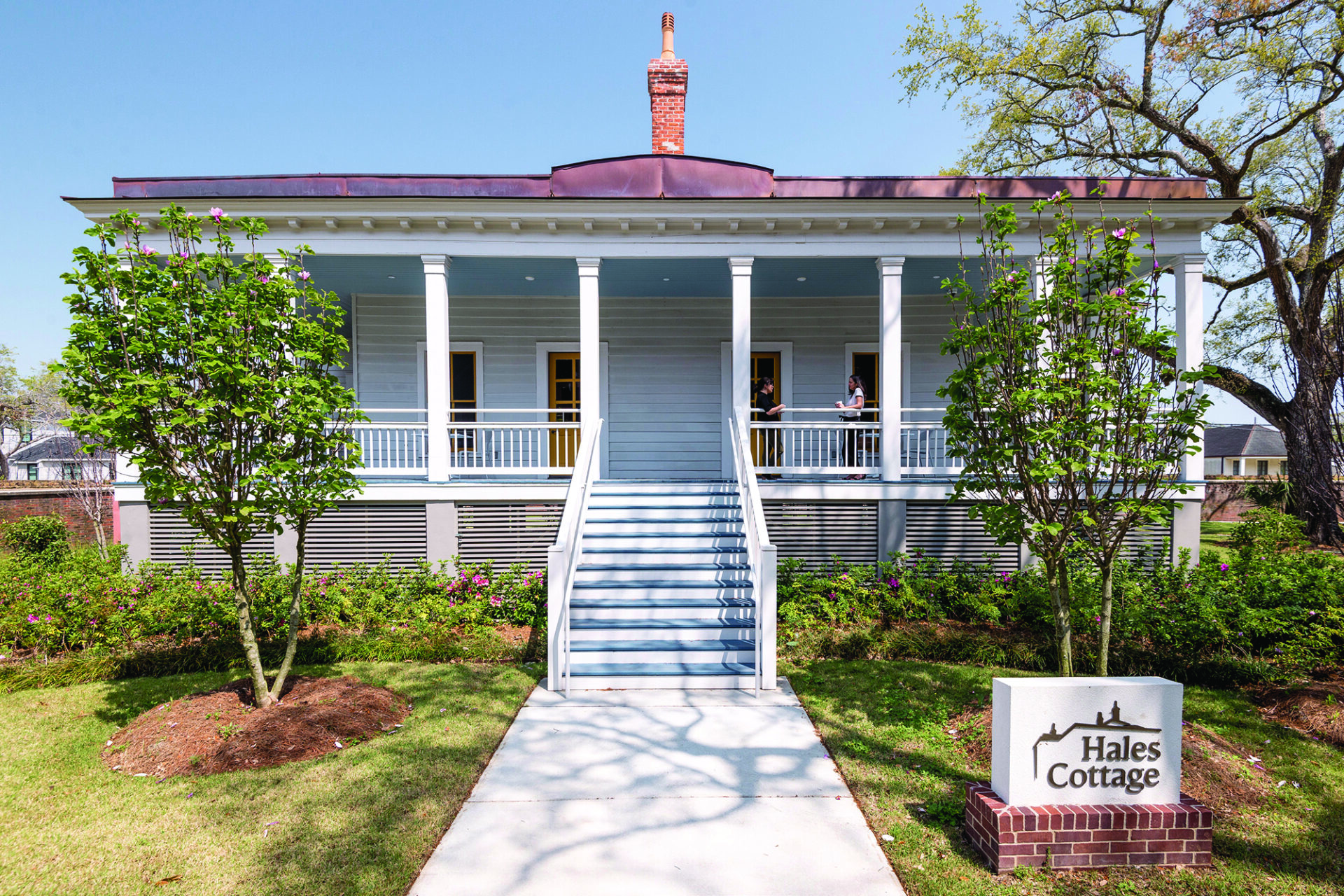
Hales Cottage, 200 Henry Clay Ave.
Team: EskewDumezRipple Architects; TLC Engineering Solutions; Salas O’Brien Electrical Engineer; Meyer Engineers Ltd.; Spackman Mossop Michaels; Donahue Favret Construction; Sara Essex Bradley
Hales Cottage dates from circa 1830s as a house on the plantation of Jean Étienne de Boré. It is reportedly the oldest cottage in the area and seeing it in decline and recognizing its historical significance, Louisiana Landmarks Society named it to its New Orleans Nine Most Endangered list in 2009. Located on Children’s Hospital New Orleans campus, Hales Cottage has now been restored, blending 1850s antebellum charm with modern amenities. Repositioned for accessibility, the restoration preserves the original features of the house despite the challenges of water damage and termite infestation. Community engagement was central to the conservation effort, ensuring that the revitalized space meets local programming needs. Now a neighborhood gathering place with a coffee shop, Hales Cottage embodies the hospital’s commitment to heritage and community.

Hotel Monteleone, 214 Royal St.
Team: Landis Construction; SCNZ Architects; McKee & Carman Design Group; IMC Consulting Engineers New Hotel Monteleone LLC
Established in 1886, Hotel Monteleone, now managed by its fifth-generation family owner, underwent extensive renovations on its 15-floor Iberville Tower and ballroom. The project aimed to preserve its rich history while enhancing hospitality offerings, despite challenges from Hurricane Ida and Covid-19 restrictions. Upgrades to mechanical, electrical, and plumbing systems were accompanied by preservation efforts. Special literary suites honoring William Faulkner, Tennessee Williams, and Truman Capote were meticulously preserved. The team prioritized safety and quality while adhering to historic guidelines and tax credit requirements. The renovation project successfully blends modern amenities with historic charm, marking a new era for the Hotel Monteleone.

The Mary Beth Hotel, 310 S. Rampart St.
Team: Welty Architecture; DEI Contractors; Design Engineering; Bank Plus; Robert X Fogarty; Standuke Management
The Mary Beth Hotel at 310 S. Rampart St. exemplifies the mid-19th-century Greek Revival style located in the Central Business District. Neglect had damaged its historic elements, but rehabilitation efforts have restored it to its former glory. The project reconstructed the roof, restored the facade, and elevated the first floor to mitigate flood risks. Challenges included the remediation of the deteriorating upper facades and structural instability, which were addressed through reconstruction and reinforcement. Inside, modern amenities blend with the preservation of historic fabric across six residential units. Original materials were salvaged, including reclaimed ceiling beams transformed into flooring. This project showcases sustainability and historical authenticity, revitalizing a landmark with meticulous care.

Thirteen15, 1315 Gravier St.
Team: Albert Architecture/SCNZ; IMC Consulting Engineers; Morphy Makofsky; Structural Engineers; Hernandez
Consulting and Construction; New Orleans Redevelopment Fund 2740
Originally known as The Warwick, Thirteen15 has been a CBD fixture since 1952. The building recently underwent a renovation to maintain its Mid-Century Modern allure while embracing contemporary functionality. Upon construction in 1951, the building featured aluminum accents, brickwork, and a stylish lobby with terrazzo floors and marble details. Thirteen15 now boasts sunlit, spacious apartments with updated amenities and kitchens, while preserving its historic charm. Exterior enhancements include fresh paint and sustainable features like rain gardens and courtyards. Awarded historic rehabilitation tax credits, the project successfully balances preservation and modernization, providing housing to medical students and retaining its iconic status.
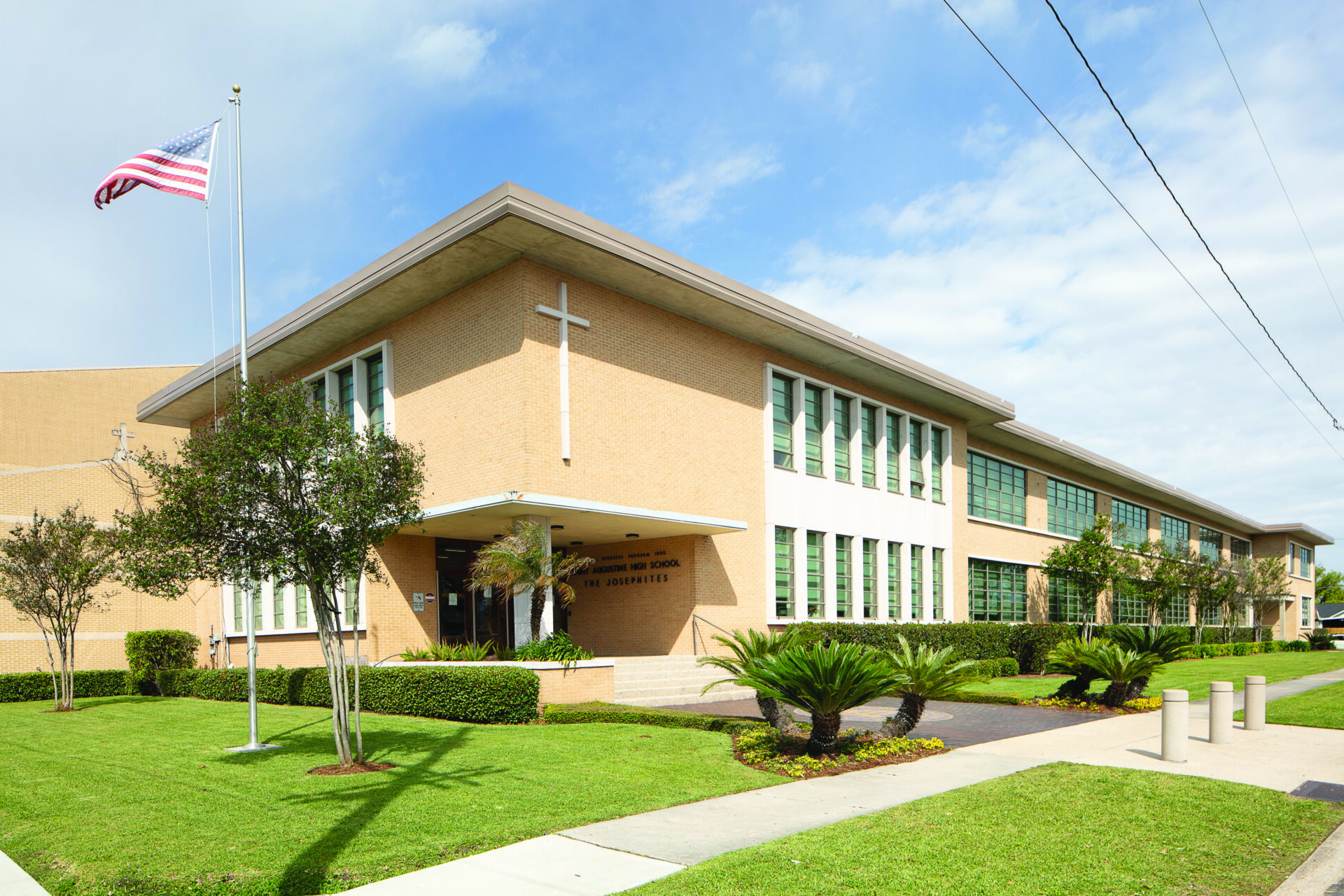
St. Augustine High School, 2600 A. P. Tureaud Ave.
Team: Trapolin-Peer Architects; CDW Services,
Infinity Engineering
St. Augustine High School, founded in 1951, is renowned for academic and athletic excellence and for its notably post-Hurricane Katrina resilience. After the disaster, St. Augustine reaffirmed its commitment to educating young Black men in Louisiana. Balancing tradition and progress, the school initiated a modernization project, prioritizing student engagement and legacy preservation. Renovations included the installation of adaptable STEM labs, energy-efficient windows, and an updated technology infrastructure. Revitalizing spaces like the Hall of Knights, the school aimed to enhance functionality and alumni pride. By investing in infrastructure, St. Augustine secures its future competitiveness and community value, demonstrating its dedication to adaptability and education for generations.



